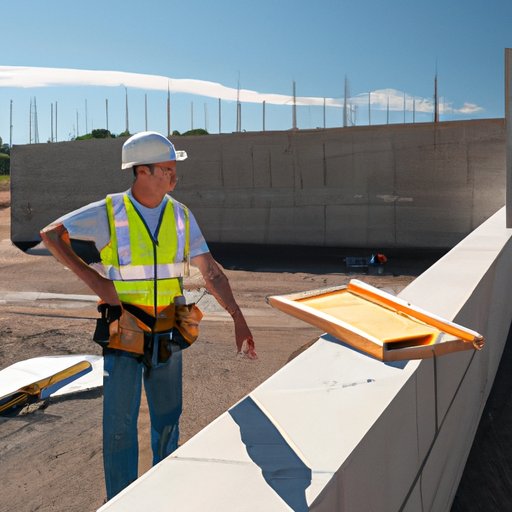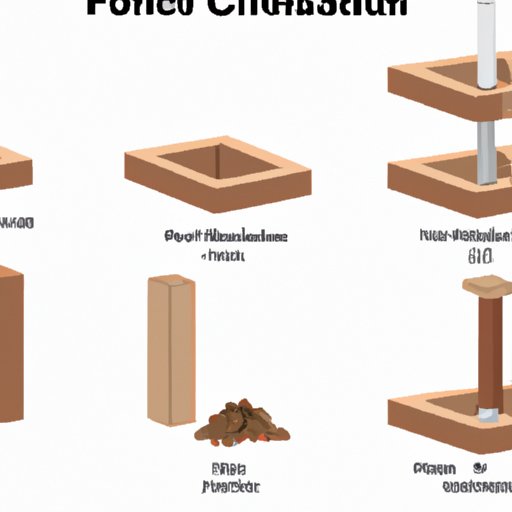
Understanding the Basics of Foundations in Construction
Building a house is a huge undertaking, and there are many things to consider before you can even break ground. One of the most critical elements of any building is the foundation. A foundation is the base upon which a structure is built and a critical part of any building’s structural integrity. Without a solid foundation, a building cannot sustain itself, and its structural stability is compromised. In this article, we will explore the different aspects of foundations in construction and the importance of understanding the foundation basics.
Building the Basics: Understanding the Role of Foundations in Construction
Before we delve into the different types of foundations, it’s essential to understand the purpose of a foundation in construction. A foundation acts as the support system for any structure. It transfers the load of the building above it onto the soil or rock beneath it. The job of the foundation is to distribute the weight of the building evenly across a broad area, ensuring that the structure remains stable and secure.
When designing or constructing a foundation, several factors come into play, including the load the building will impose, soil type, and environmental factors such as flooding. These factors will guide what type of foundation is best suited for a particular project.
One of the essential considerations in foundation design and construction is the impact of soil conditions. Different soil types have different properties, such as bearing capacity, drainage, and soil strength, which influence foundation design. Engineers and contractors must consider the soil conditions when designing a foundation to ensure the longevity and structural stability of the building.
The Foundation of a Strong, Stable Home: Exploring the Different Types
There are three main types of foundations, including slab-on-grade, crawl space, and basement. Each foundation type has its advantages and disadvantages and is suited for specific soil types and environments.
The slab-on-grade foundation is one of the most common types of foundations in use today. It is a simple, flat concrete pad poured directly onto the ground. This type of foundation is best suited for areas with warm climates and little to no frost. This foundation type is relatively inexpensive compared to other types of foundations.
Crawl space foundations are raised foundations that sit on a stem wall or foundation wall and have a ventilated space beneath the floor. This type of foundation is best suited for damp environments, such as those in coastal regions or areas with high water tables. The crawl space allows for ventilation and access to the plumbing and electrical systems of the house.
A basement foundation is a type of foundation that includes a living or storage space below the first floor. This foundation type is ideal for cold climates and areas with frequent rain. The basement provides additional square footage and a safe space during severe weather events.
From Ancient Times to Modern Construction Techniques: A Brief History of Foundations
The construction and design of foundations have evolved significantly over time. The ancient Egyptians and Greeks are credited with designing some of the most impressive foundations in history. The pyramids of Giza, for example, are some of the most massive stone structures ever built and continue to stand strong today.
In modern times, the development of reinforced concrete has revolutionized foundation design and construction. One notable example of modern foundation design is the Burj Khalifa in Dubai, which has a foundation that extends over 164 feet into the ground. It is designed to withstand the weight of the building, wind, and earthquakes.
The Science behind Foundations: Why They Are so Important
The physics behind a foundation’s design and construction is complex and intricate. The foundation must be designed to withstand the building’s weight, as well as environmental forces such as wind and earthquakes.
A solid foundation ensures the safety of the structure and the people who occupy it. A faulty foundation can lead to wall and ceiling cracks, uneven floors, and structural failure, all of which can put lives at risk.
Foundation Replacements: Why and When You Might Need Them
A foundation replacement is an expensive and time-consuming process. There are several signs that your foundation may need to be replaced, including cracks in the foundation or walls, water damage, and uneven floors. In some cases, it may be possible to repair the foundation instead of replacing it. A professional foundation contractor or engineer can advise on whether replacement or repair is the best course of action.
Choosing the Right Foundation for Your Home: A Comprehensive Guide
Choosing the right foundation for your home involves several considerations. These include the soil type, local codes and regulations, climate, and environmental factors such as flooding. Working with a contractor or engineer can help you identify the best foundation type for your needs and budget.
The Cost of Foundations: How Much You Need to Budget for Your Construction Project
The cost of a foundation can vary significantly depending on several factors, including the type of foundation, the size of the building, soil conditions, and environmental factors. A slab-on-grade foundation is typically the least expensive, while a basement foundation is the most expensive. The cost of the foundation should be factored into the overall budget for your construction project to avoid surprises down the line.
Conclusion
Foundations are an integral component of any structure, and understanding the basics is critical in ensuring the stability and safety of any building. Taking the time to select and construct the correct foundation type for the building site, and local environmental factors will not only save time and money but also ensure the longevity and safety of the structure for generations to come.
